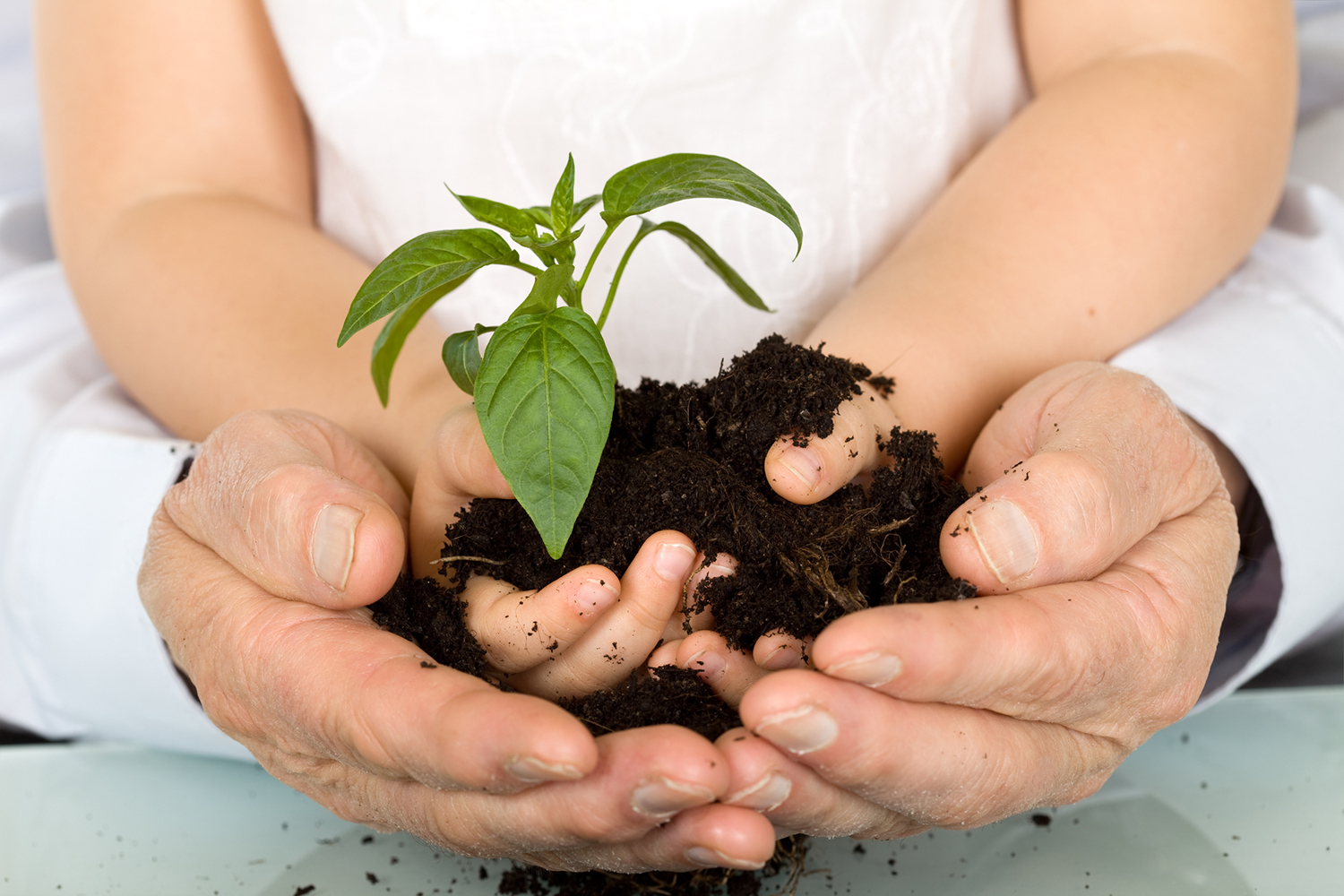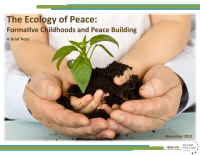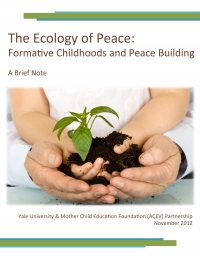The ‘Ecology of Peace’ conceptual framework
Introduction
The ‘Ecology of Peace’ is a conceptual framework that provides a model for exploring the multiple relationships between early childhood development and peace building (Britto et al, 2014). Both of these constructs are complex and expressed at several interrelated levels: individual, family and community. For example, previous work has identified impulsivity (at the individual level), poor child-rearing practices (at the family level), and poverty (at the community level) as factors that can be modified in efforts to reduce violence. However, the associations among these factors are varied and elaborate.
The ‘Ecology of Peace’ framework provides a set of hypotheses to illuminate the associations between early childhood development and peace building. To connect bio-behavioral models with socio-ecological models of development, we identified five components:
-
The neurobiology of peace
-
Affiliative bonding
-
Parenting and peacemaking
-
Early learning and peacemaking
-
Peacemaking to peace building
Video slideshow | The Ecology of Peace: Formative Childhoods & Peacebuilding (5:16)
The aim of this segmented analysis is to provide a brief description of each component and the association between the constructs therein. This approach allows for detailed discussion of the five distinct facets of the framework, and the existing scientific theories that support each of them, without diffusion or conflation of critical concepts. By dissecting the framework in this way, we highlight the hypothesized key elements, processes, or pathways associated with early childhood development and peace building. The overview presented is not exhaustive, but serves to establish a framework for discussion and guide our systematic review, “The exploration of the role of parenting and early learning programs in promoting positive development and peace building”.
References & relevant information
- Britto, P.R., Gordon, I., Hodges, W., Sunar, D., Kağitçibaşi, C., & Leckman J.F. (2014). Ecology of peace. In Leckman, J.F., Panter-Brick, C., & Salah, R. (Eds.), Pathways to peace: The transformative power of children and families (pages 27-42). Boston: MIT Press.
This presentation by the Mother Childhood Education Foundation (AÇEV) and Yale University explores the significance of potential associations between early childhood development and peacebuilding. The conceptual framework integrates bio-behavioral evidence on early development with socio-ecological perspectives on contextual influences.
This brief note by the Mother Childhood Education Foundation (AÇEV) and Yale University explores the significance of potential associations between early childhood development and peacebuilding. The conceptual framework integrates bio-behavioral evidence on early development with socio-ecological perspectives on contextual influences.
Dr. Lina María González Ballesteros, Healthy Living Leader at the Fundación Saldarriaga Concha in Bogota, Colombia, discusses her foundation’s success in mobilizing funds for investment in early childhood in Colombia through the conceptualization of peacebuilding from early childhood.
This systematic review of research linking early childhood development and peace building reveals 76 articles and reports that fully met the a priori criteria.
JOIN THE CONVERSATION
For breaking news and to stay connected, follow us on social media. Sign up to get our E-News delivered straight to your inbox.






